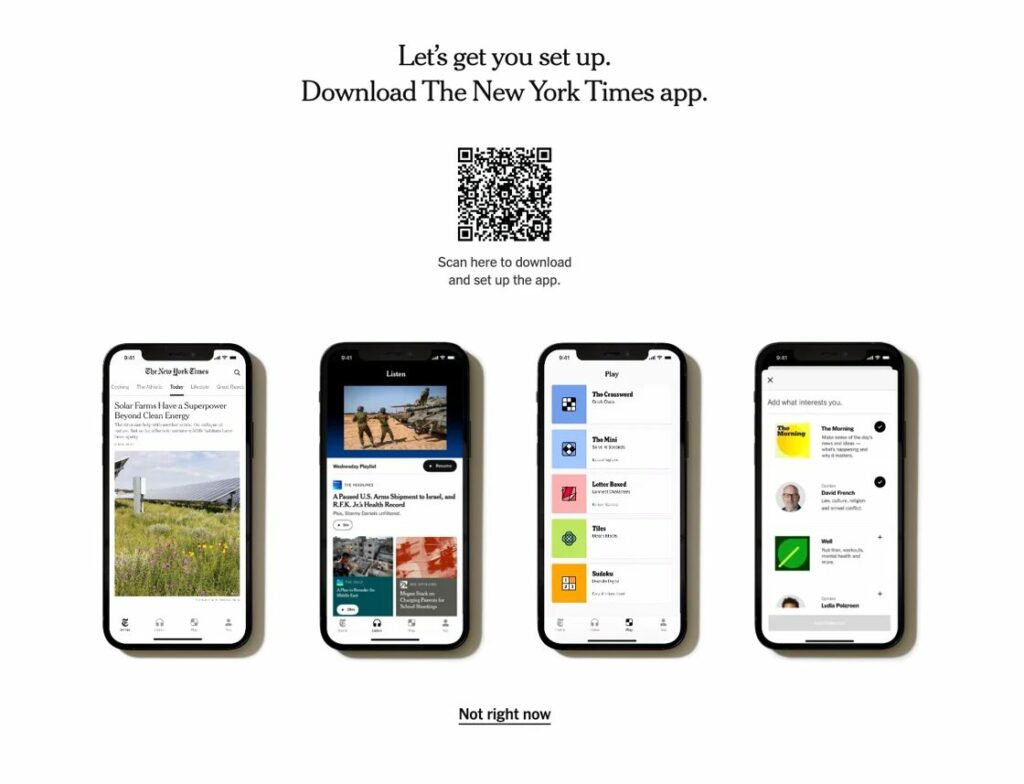

You're reading The Audiencers' newsletter #65 sent out on June 11th, 2025. To receive future newsletters straight to your inbox every two weeks, sign up here.
In today’s newsletter:
- Belonging > Reach: the most valuable newsroom KPI has changed
- The New York Times has a new onboarding journey for registered members, and it show us exactly what’s valuable to their business model
- 45 acquisition channels to convert readers into subscribers
- 🔗 Links links links – to add to your reading listg list
The most valuable newsroom KPI is no longer reach but belonging
While reach is still fundamental for visibility, the most valuable newsroom KPI has evolved past engagement to belonging. In today’s saturated content landscape, it’s not just about being seen, but about building loyalty, habit, and ultimately, value.
Belonging describes the reader who returns regularly, has established a habit around your content, participates thoughtfully, and actively chooses your publication.

How can newsrooms design for belonging?
> Building habits through consistency: Recurring formats, daily newsletters and regular voices help readers establish routines.
> Creating opportunities for participation: Comments, surveys and live discussions encourage users to contribute and shape the conversation.
> Offering personalisation: Tools that let users follow topics or curate feeds reinforce the sense that the product reflects their interests.
> Establishing editorial identity: Publications that take clear positions and develop strong voices foster emotional alignment.
How do you measure belonging?
> Frequency and regularity of visits
> Retention rates across time periods
> Direct traffic and app opens
> Participation in community features
> Subscription tenure and renewal rates
> Referral and recommendation behaviour
The New York Times has a new onboarding journey for registered users…
and it tells you exactly what’s valuable to their business model.
Onboarding journeys (i.e. the user experience immediately after registering or subscribing, on-site, on-app and via email) are essential for delivering value, increasing engagement and personalising a user’s experience.
Importantly, they should be designed according to what makes a valuable member/subscriber to you. Which is of course exactly what The New York Times has done…




Based on this onboarding journey, it’s clear that for the NYT a valuable user:
> is engaged in multiple verticals – news, cooking, sport, audio, games, reviews
> is signed up to one or more of their newsletters, an important content format for building habits and bringing readers back to the site
> plays games, something proven to form habits and bring in new audiences (think of the Wordle trend, where those who didn’t play daily felt left out of conversations). Interestingly, they even added a “Go to games” link at the end
> downloads and uses the app
+ Plus of course a banner on-article to promote their paid offering
The lesson to remember:
> Onboarding is essential, but should be adapted to your audience – what features, content or benefits are the most valuable to you (often calculated based on engagement/retention) ?
But first things first – a basic on-site onboarding is better than no onboarding! (pst, this is something Poool can help with, like we did with Le Parisien)
45 acquisition channels to convert readers into subscribers
How are you diversifying your subscriber acquisition channels and proving to readers the value of paying?
There are of course the classic paywalls and pop-ups, but have you considered…
> Reserving certain UX features for subscribers but making them visible to free readers? Like The New Yorker’s “Subscribe to listen”

> Promoting subscription in the registration onboarding journey, like SCMP and The New York Times
> Paywalling a free newsletter, learning from Substack
> Targeted pop-ups or emails for readers who visited the subscription offers page but never subscribed, like L’Équipe and The Sydney Morning Herald
> Open days or weekends, temporarily removing the paywall, like The Times and Sunday Times
Find the full list of 45 ideas on The Audiencers
Recommendations to add to your reading list
- Strategic clarity, an end to silos and audiences-centricity: why you need audience practitioners and product people
- Let’s get to the point: Three newsrooms on generating AI summaries for news
- Read, play, swipe: The strategy behind The New York Times app revamp
- The Times gives readers ‘bonus accounts’ in bid to retain more subscribers
See you in two weeks for the next newsletter,
Madeleine


